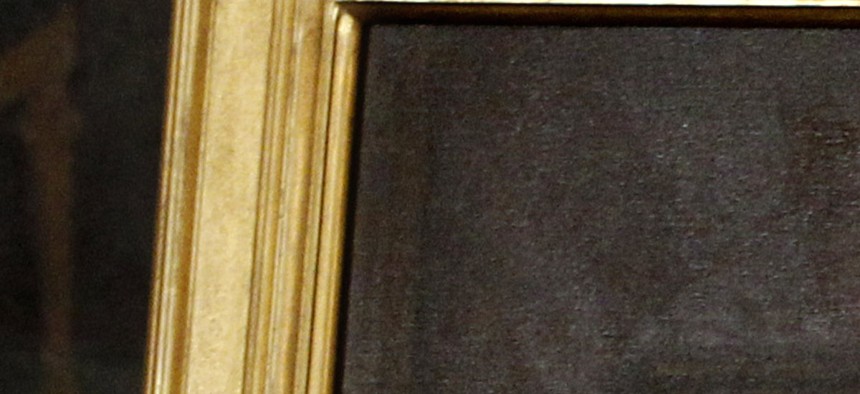
Charles Dharapak/AP
Why the Spending Bill Would Ban Official Portraits
Federal officials have a history of commissioning expensive oil paintings for tens of thousands of dollars.
Fiscal conservatives didn't get everything they wanted in the 2014 spending bill, but they did win the battle over oil paintings.
It might be meaningless in the context of the $1.1 trillion omnibus bill revealed Tuesday, but one section of the bill would save money by banning the federal government from paying for paintings of the president, vice president, members of Congress, or other officials.
Those savings might be small compared with issues relating to the Affordable Care Act or the defense budget, but Cabinet heads have managed to spend a surprising amount on paintings in the past.
The federal government spent $180,000 on official portraits in 2012, according to a November 2012 review by The Washington Times. The Environmental Protection Agency spent nearly $40,000 on a portrait of then-Administrator Lisa Jackson; the Air Force spent $41,200 on a portrait of then-Secretary Michael Donley; and the Agriculture Department spent $22,500 on a portrait of Secretary Tom Vilsack, according to The Times investigation. Before Jackson's portrait, the EPA spent about $30,000 on a portrait of then-Secretary Stephen Johnson, the newspaper said.
And The Washington Post found in 2008 that most portrait contracts are awarded with no competitive bidding.
Expensive portraits drew opposition before the issue found its way into the spending bill. In April, Rep. Bill Cassidy, R-La., introduced the Eliminating Government-funded Oil painting (EGO) Act, which also would have prohibited federally funded portraits of certain officials.
It's worth eliminating those costs even if it doesn't make a noticeable dent in the budget, said Steve Ellis, spokesman for the watchdog group Taxpayers for Common Sense.
"At least it's showing a nod to some level of fiscal responsibility while we waste millions and billions elsewhere," Ellis said.
Portraits of the president, vice president, and other major political figures are understandable, but a nicely framed photograph should be enough for less influential officials, Ellis said.
And some federally funded portraits are located in secure areas of office buildings, off-limits to the public, adding to Ellis's belief that taxpayers should not pay for them.
As digital cameras become cheaper and even the president uses a phone to take selfies, the purpose of painted portraits has changed. Rather than simply documenting leaders of executive agencies, Ellis said they have become a lavish perk.
"There are very few people who could afford to pay for a portrait at all," Ellis said, "and times have changed."
NEXT STORY: House Passes Fiscal 2014 Spending Package






